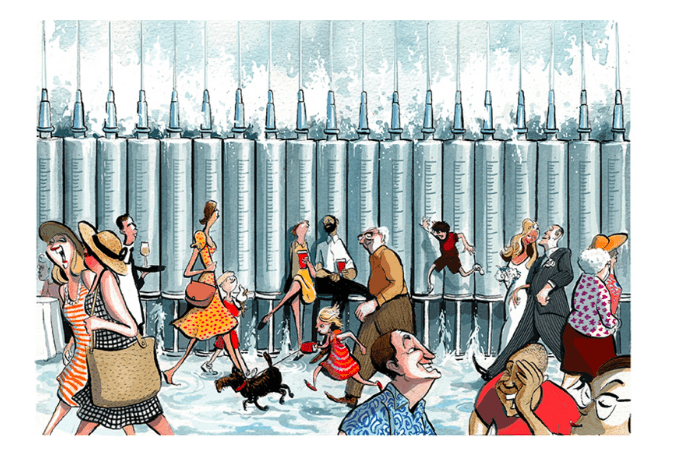The link between Covid cases and hospitalisations has been broken, we keep being told – vaccination having reduced the severity of infections, especially among more vulnerable older groups. It is a point reinforced this morning by Public Health England which reveals that the number of cases of the delta (formerly Indian) variant have increased from 12,431 to 42,323 in a week, but without a corresponding rise in hospitalisations.
But how true is it that what looks like a third wave in new infections will not be accompanied by a large wave of hospitalisations? Previous experience with Covid – using PHE data – suggests there is not a very long lag between cases and hospitalisations. In January, new cases peaked at 68,053 on 8 January; hospitalisations at 4578 four days later.
In the first wave, hospitalisations actually peaked four days ahead of new cases – although that was before the era of mass testing.
There are some signs of optimism that the rate of hospitalisations will not reach the levels it did in January
This time around, the third wave seems to have begun on 3 May – that was the day that cases bottomed out at 1649. The seven day rate of infection per 100,000 bottomed out on the same day at 19.4. That is over a month ago, so if the third wave of infections is going to be followed by a corresponding third wave of hospitalisations, we should be able to detect it by now.
On 5 June, the seven day infection rate reached 51.7 – around 2.7 times the infection rate on 3 May. As for hospitalisations, they bottomed out on 16 May when the seven day average was 99. The seven day average on 5 June was 132, just 34 per cent higher than it was on 16 May.
Now, however, let’s assume there is a 13 day delay between infections and hospitalisations (i.e. the gap between 3 May and 16 May), and compare the hospitalisation rate on 5 June with the seven infection rate on 23 May. On 23 May, the seven day average infection rate was 25.5 per 100,000 – 31 per cent higher than it was on 3 May. In other words, if you accept a 13 day lag between infections and hospitalisations then the latter seem to be closely following the former.
The other way to look at it is to compare what is happening now with what happened in the second wave. Infections were at the level they are now – 7000 to 7500 a day – in the last week of September, before they leapt upwards the following week. In the last week of September, hospitalisations were averaging around 450 a day – three times as many as we are seeing now.
By that comparison, the third wave appears to be causing a lot less serious illness – although, of course, the number of Covid cases confirmed is not necessarily a good guide to the number actually in circulation. Much depends on the level of testing in the community.
Put all this together and it is not entirely clear whether or not hospitalisations are tracking infections in the way they were during previous waves. Nor do we yet know when, or at what height, the third wave will peak.
But there are some signs of optimism that the rate of hospitalisations will not reach the levels it did in January – as you would hope and expect, given the number of vaccinations in the interim.







Comments